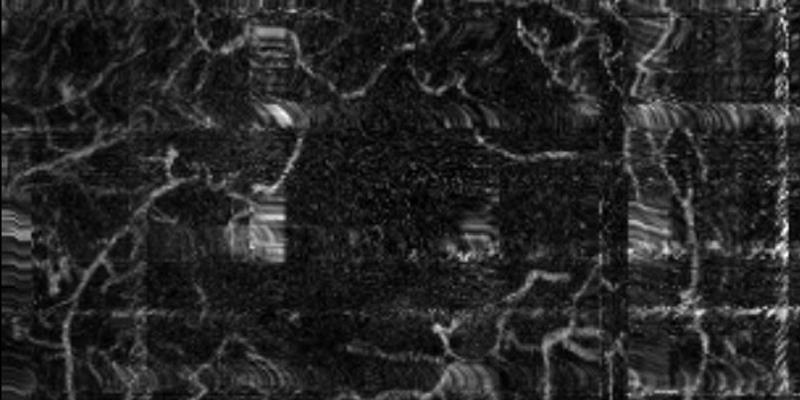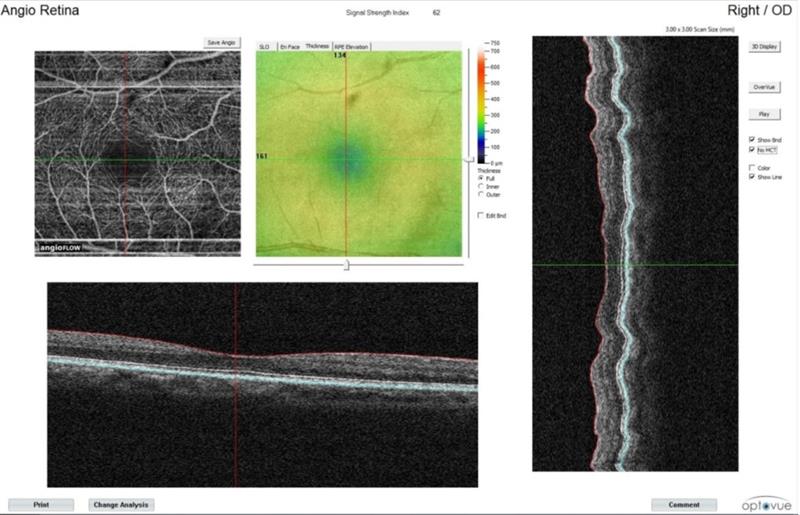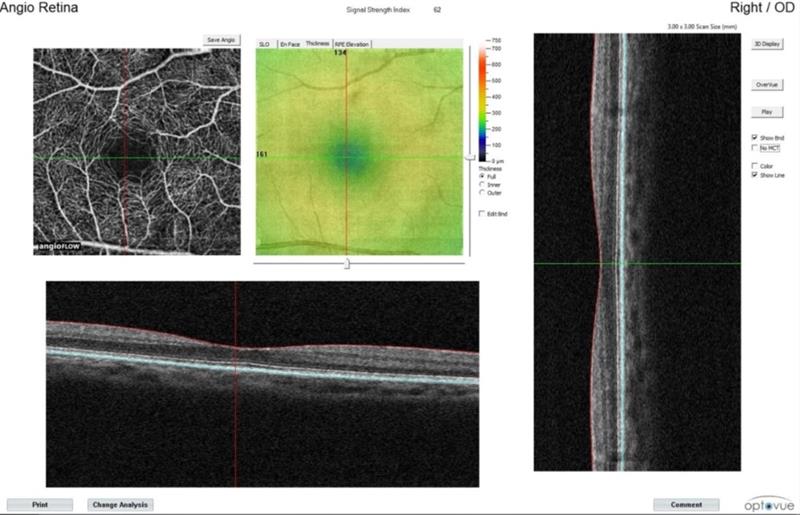OCT angiography (OCTA) uses the movement of blood cells as the intrinsic contrast that allows the visualisation and analysis of vascular tissues. Because of the need for multiple scan analysis and the three-dimensional nature of vascular structures, OCTA is particularly prone to artefacts. These may be of two main types:
- Motion artefacts. If the eye moves between scans during OCT assessment, then individual scan data will vary and introduce errors. Most modern OCT units include, therefore, some form of tracking technology to interrupt scanning when a large eye movement or blink takes place. They tend to do this by the ‘live-capture’ of details from, for example, vessel walls (figure 1 left) and then only continuing a scan when the incoming image fits the profile (figure 1 right). This means scanning takes longer for less stable fixation, but the results are more accurate. Smaller movements, such as saccades, are not enough to trigger a tracking interruption and so result in thin white lines across the en face image or a ‘patchwork quilt’ appearance (figure 2). The number and resolution of scans needed for OCTA makes this a significant problem with the technique.
- Projection artefacts. Highly vascularised areas produce fluctuating shadows which may become superimposed upon views of deeper layers so giving an erroneous image. The left image on figure 3 represents the highly vascularised retinal superficial plexus. The arrows show significant vessels which are also seen in the middle view representing the outer retina. Only when these projection artefacts are removed (right of figure 3) can the avascular nature of this layer be seen and the new vessel complex become clearer. The AngioVue incorporates a ‘remove artefacts’ option which strips out vessel details that are found in other en face views – as shown in figure 3. Later this year, Optovue are releasing 3D Projection Artefact Removal (3DPAR) software to enhance the process further.

Figure 2: Motion artefacts due to saccades during OCTA
Motion correction technology and DualTrac
The latest OCT instruments from Optovue (the Avanti OCT and the Angiovue – both distributed in the UK by Haag Streit UK) use a video live capture eye tracking system during a scan as one would expect.

Figure 3: Projection artefacts from the superficial layer (left) are seen on the deeper layer image (centre) and need to be removed (right)
Post-scanning, there is a further enhancement of the image with Motion Correction Technology (MCT). This is based on the acquisition of two three-dimensional volume scans so that even distortions due to small eye movements (less than 100 microns) can be removed in the final representation (figures 4 and 5).

Figure 4: Motion artefacts due to small eye movements

Figure 5: Motion artefacts removed by MCT
The combination of both live capture motion tracking and MCT is trademarked as DualTrac and is now incorporated into Optovue OCT systems. Initial reports1 are suggesting the DualTrac approach is proving to be significantly effective in removing motion artefacts and ensuring minimum error when monitoring patients.
Reference
1 A Camino, M Zhang, SS Gao, TS Hwang, U Sharma, D Wilson, D Huang, Y Jia. Evaluation of artifact reduction in optical coherence tomography angiography with real time tracking and motion correction technology. Biomedical Optics Express Vol. 7, No. 10, 2016
Further information from Haag Streit UK
